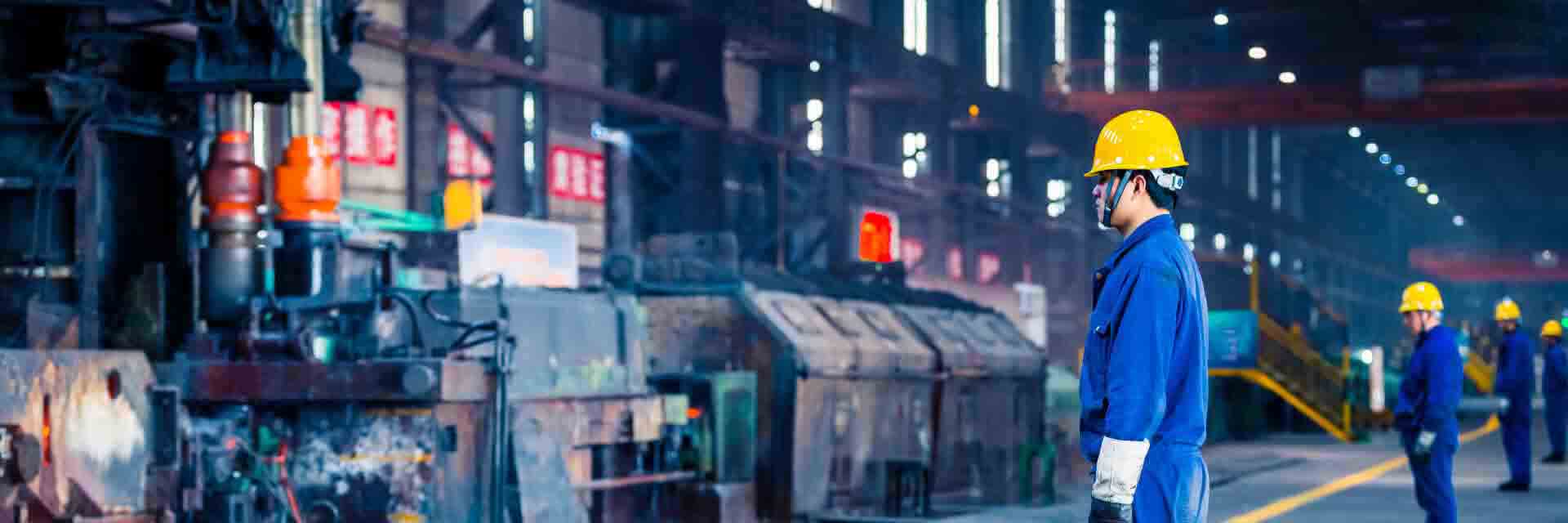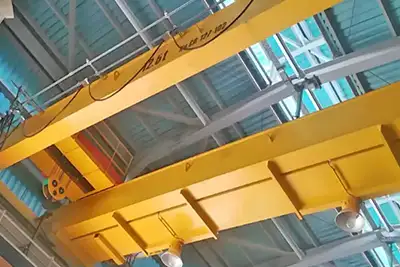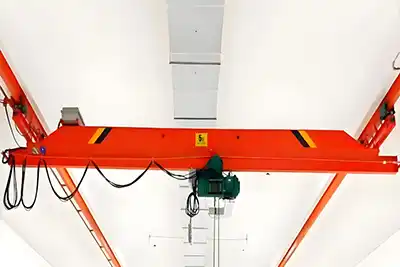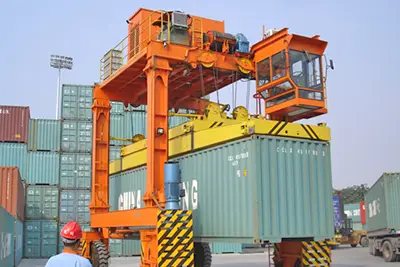Maximizing Gantry Crane Reach with Cantilever Extensions Benefits
Cantilever extensions expand gantry crane reach, improving load access, operational flexibility, safety, and overall efficiency in tight or complex spaces.
Introduction
Gantry cranes play a key role in heavy material handling. Whether you're working in a steel stockyard, fabrication area, or port terminal, these cranes provide the lifting power and mobility needed to move bulky loads across wide areas.
Unlike overhead bridge cranes that rely on fixed building supports, gantry cranes stand on legs and roll along rails or wheels. This makes them ideal for outdoor use or locations without suitable structures for supporting a bridge crane system.
But there’s a common issue. Standard gantry cranes only allow the hoist to move between the legs. What if you need to go further — say, over a truck bed, into a container, or past a wall? That’s where cantilever extensions come in.
A cantilever extension is simply an overhang on one or both sides of the main girder. It lets the hoist and trolley move beyond the leg frame, giving you extra reach where you’d normally hit a limit.
This article looks at how these extensions work, where they’re useful, and why they’re often the missing piece for more efficient crane operation. If you're planning a new crane setup or thinking about upgrades, cantilever extensions are worth understanding — and maybe even including.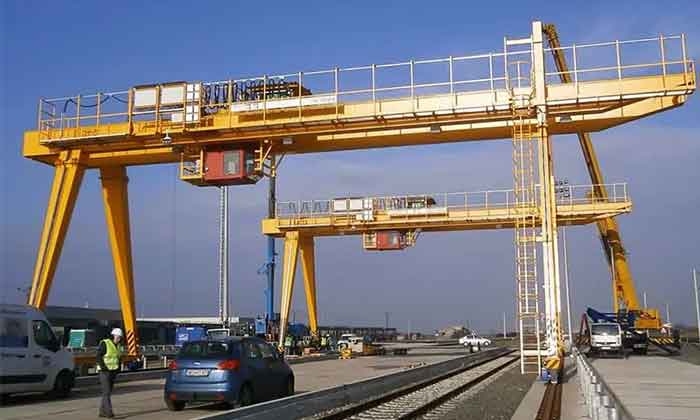
cantilever gantry crane 10 ton for sale
What Are Cantilever Extensions in Gantry Cranes?
Cantilever extensions are parts of a gantry crane’s main beam that stretch out past the supporting legs. Think of them as extra reach — overhangs that let the hoist travel beyond the standard working span. They’re not just there for show. These extensions are carefully engineered to handle real loads and make your crane more useful in tight or irregular work areas.
Here’s a closer look at what they involve:
Structural Definition
A cantilever extension is a continuation of the gantry crane’s main girder that projects beyond one or both legs. The hoist and trolley can move out onto this extended portion, allowing you to lift and place loads outside the main runway area. This is particularly useful for loading or unloading trucks, feeding machinery, or working near obstacles.
Common Configurations
- Single-side cantilever: Only one end of the crane has the extension. This works well when the crane runs alongside a truck lane or a wall.
- Double-side cantilever: Both ends of the girder have extensions. This setup is chosen when there’s a need to access space on both sides of the crane's travel path — for example, in a yard with storage zones on both ends.
Materials and Design Considerations
- Cantilever sections must be built from the same high-strength steel as the main girder to handle the stress of extended loads.
- They require added structural reinforcements, especially near the connection points where stress concentration is highest.
- Load ratings on the cantilevered portions are usually lower than in the center span. You’ll need to check with your crane supplier to make sure the hoist can safely handle loads when it's operating at full reach.
- It’s also important to consider wind loads and deflection, especially if the crane operates outdoors or is exposed to crosswinds while lifting loads on the extended sections.
In short, cantilever extensions aren’t just tacked on — they’re part of the crane’s working system and should be planned with your specific tasks and layout in mind.
single girder cantilever gantry crane 5 ton + 5 ton for your reference
Key Benefits of Cantilever Extensions
Adding cantilever extensions to a gantry crane isn’t just a design tweak — it changes how your crane works day to day. These extensions allow your crane to operate outside its usual footprint, opening up new possibilities for handling materials more efficiently and safely.
Increased Working Area
You get more usable space without adding more track or building infrastructure. That’s a big deal in tight or busy yards.
- The hoist can reach beyond the crane’s main legs, accessing areas that were previously out of bounds.
- Makes it easier to lift or place items directly onto trucks, into storage racks, or through openings at the edge of a work zone.
Enhanced Flexibility in Layouts
Some workspaces are just awkward. Cantilever extensions help you work around that.
- Ideal for layouts with walls, equipment, or uneven terrain where the crane can’t travel.
- Helps operators position loads beyond physical obstructions — without moving the crane or the load manually.
Reduced Repositioning and Time Savings
Time spent adjusting load position or moving the crane adds up quickly. With cantilevers, that’s less of a problem.
- Lets the operator reach the target area in fewer moves.
- Streamlines the lifting path, which can help speed up loading cycles — especially useful in repeat tasks or shift operations.
Improved Safety and Handling Control
Less movement means fewer chances for something to go wrong.
- Reduces the need for ground workers to guide or manually adjust loads in hard-to-reach spots.
- Minimizes awkward lifts that can swing, twist, or strain the crane unnecessarily — all of which can lead to accidents or wear.
In practical terms, cantilever extensions give your gantry crane more reach and more options — without having to make major changes to your layout. That extra flexibility can pay off in day-to-day operations, especially when space, time, and safety are top priorities.
Applications That Benefit Most from Cantilever Extensions
Cantilever extensions aren’t necessary for every gantry crane setup — but in certain environments, they solve real, daily challenges. If your work involves limited access, uneven layouts, or tight margins around the crane path, cantilever extensions might make operations smoother and more productive.
Here are some typical applications where they make a strong impact:
Steel Yards and Stockyards
- In steel handling, it's common to load or unload materials stored just outside the crane’s track area.
- Cantilever extensions help reach long beams, coils, or bundled pipes stacked near fences, loading zones, or truck lanes.
Port Container Handling and Shipping Depots
- When containers or heavy cargo are placed along the perimeter of the crane path, cantilevers let the hoist swing out and grab the load without repositioning the entire gantry.
- Useful for operations where floor space is shared with vehicles or other lifting equipment.
Fabrication Plants with Limited Floor Access
- In shops or yards where large machines, fixed tools, or structures block the crane’s full movement, the cantilever provides a way to lift or place materials beyond those obstacles.
- Saves space and supports better flow in production areas.
Loading Docks and Warehouses with Partial Coverage
- Many warehouses and loading bays don’t have enough length for full-span gantry travel.
- A cantilevered crane can extend over docks, bays, or partially open doors to assist with indoor/outdoor material transfer without needing extra lifting equipment.
In all of these cases, cantilever extensions provide access where regular gantry cranes stop short. If your work involves handling materials at the edge of your crane’s range — or just outside of it — this feature can be the difference between a workaround and a reliable solution.
Benifits of cantilever gantry crane vs non cantileved gantry crane
Design and Load Considerations
While cantilever extensions offer real advantages, they also come with important engineering factors that must be carefully addressed. These aren't plug-and-play features — the structural integrity, safety, and performance of the crane depend on proper design and planning.
Here’s what buyers and engineers need to keep in mind:
Load Capacity Limitations on Cantilevered Ends
- The further a load is moved from the crane’s center span, the greater the bending force on the beam.
- Hoists can usually travel onto the cantilever, but with restrictions. The allowable load on the cantilevered section is often reduced by 20%–50% depending on span, design, and steel quality.
- You should always confirm with the crane manufacturer how much weight can be safely lifted at the full cantilever reach — don’t assume it’s the same as the main span.
Balancing Crane Stability and Structural Reinforcement
- Cantilevered beams place added stress on the crane’s girder and end trucks. That stress must be absorbed through reinforced welds, thicker flange plates, or added stiffeners inside the beam.
- The legs and end carriages may also need wider wheelbases or stronger cross-bracing to maintain lateral and torsional stability.
- For rail-mounted gantry cranes, uneven loading on one side can increase rail wear or misalignment risks if not properly engineered.
Importance of Finite Element Analysis (FEA) in Design
- FEA is often used to simulate how the crane structure behaves under different loading conditions, especially at the cantilevered ends.
- It helps engineers identify high-stress points, predict deflection, and test the load path from the hook to the wheels before the crane is even built.
- Without this analysis, hidden weaknesses in the extended section might only show up during operation — a costly and dangerous oversight.
Wind Load and Dynamic Load Impact on Extensions
- Cantilevered ends are more exposed to wind pressure, especially on outdoor cranes. Strong side winds can cause swaying or twisting, even without a lifted load.
- When handling loads on the extended sections, dynamic effects (such as sway, hoist braking, and sudden direction changes) are magnified due to the lever-arm effect.
- Engineering must account for both static and dynamic forces, with safety factors adjusted to local wind zones, load types, and frequency of use.
Bottom line: cantilever extensions must be integrated into the overall crane design — not added as an afterthought. Every added meter of reach needs to be backed up by steel, math, and experience. When done right, they’re incredibly useful. But it starts with understanding their impact on your crane’s performance, safety, and lifespan.
Cost vs. Value: Are Cantilever Extensions Worth It?
Adding cantilever extensions to a gantry crane does come with some extra upfront costs. But the real question is: do those costs pay off over time? Let’s break down the financial side so you can weigh the pros and cons more clearly.
Initial Cost Comparison (Standard vs. Cantilevered Designs)
- Cantilever extensions require more steel, additional structural reinforcements, and often more detailed engineering.
- This means the initial purchase price of a gantry crane with cantilever extensions can be 10% to 30% higher than a standard crane of the same lifting capacity.
- Installation might take longer, especially if modifications are needed to the crane’s runway or foundation to handle new stresses.
Long-Term Productivity Gains
- The extra reach reduces the time spent repositioning loads or moving the crane to access areas outside the standard span.
- Operators can work faster and more efficiently, which translates into higher throughput, especially during busy shifts.
- Over months and years, these time savings add up — often offsetting the higher initial investment.
Reduced Need for Additional Lifting Equipment
- Without cantilever extensions, you might need forklifts, mobile cranes, or even manual labor to handle loads just outside the crane’s normal range.
- Those extra tools cost money — not just to buy or rent, but also for operation, maintenance, and staffing.
- A gantry crane with the right cantilever can reduce or eliminate the need for these secondary resources, simplifying your workflow and cutting ongoing expenses.
ROI in Multi-Purpose or Shared-Access Crane Applications
- If your gantry crane serves multiple work areas or shifts with different layouts, cantilever extensions add flexibility that improves overall crane utilization.
- This versatility means fewer cranes are needed on site, reducing capital and maintenance costs.
- For facilities with evolving layouts or seasonal peaks, the extensions allow the crane to adapt without costly replacements or retrofits.
In short, while cantilever extensions increase your initial spend, the value they bring in productivity, flexibility, and reduced operational complexity often makes them a smart investment. It’s important to look beyond sticker price and consider the bigger picture — the total cost of ownership over the life of the crane.
Buyer Tips: What to Ask Before Adding Cantilever Extensions
If you’re thinking about adding cantilever extensions to your gantry crane, it’s important to ask the right questions upfront. This helps avoid costly mistakes and ensures the crane you get truly fits your operation.
Here are some practical tips to guide your decision:
What Tasks Require Extended Reach?
- Start by clearly defining what loads need to be lifted beyond the crane’s standard span.
- Are you loading trucks, reaching around obstacles, or working in irregularly shaped yards?
- Understanding the specific needs will help determine how long the cantilever should be and what load capacity it requires.
Is Your Site Layout Suitable for Cantilever Use?
- Check the space available beyond the crane legs. Is there enough clearance for the extensions and for safe load movement?
- Consider obstacles like walls, columns, or other equipment that might block the hoist or trolley.
- Also, think about ground conditions and runway stability since cantilevers can put additional stress on the crane structure.
What Is the Weight Distribution on the Extended Sections?
- Lifting heavy loads far from the crane centerline changes how forces act on the crane and runway.
- It’s essential to know typical load weights and how often you’ll use the extended area to ensure the crane can safely handle the stress.
- Ask the manufacturer for detailed load charts that show capacity limits specifically for the cantilevered zones.
Are There Future Plans That Justify the Added Flexibility?
- If your facility layout or processes are likely to change, cantilever extensions can provide adaptability without buying a new crane.
- On the other hand, if your operation is stable and straightforward, the extra cost might not pay off.
- Think about potential expansions, different product lines, or new workflows that might benefit from extra reach down the line.
Work With Experienced Manufacturers to Evaluate Structural Integrity and Performance
- Not all crane suppliers have the engineering expertise to design safe, efficient cantilever extensions.
- Choose manufacturers who use advanced design tools like finite element analysis and who have proven track records with these types of cranes.
- Ask for references, case studies, or site visits to see similar cranes in action.
- A good manufacturer will help you balance cost, safety, and functionality, tailoring the cantilever to your exact needs.
By asking these questions and partnering with the right experts, you can make sure your gantry crane’s cantilever extensions add real value — and keep your operation running smoothly and safely for years to come.
Conclusion
Cantilever extensions deliver tangible benefits that go beyond just adding length to your gantry crane. They expand your working reach, allowing you to manage loads in challenging or limited spaces more effectively. This boost in flexibility helps streamline operations, reduce time spent on repositioning, and enhance overall safety during load handling.
By increasing the crane’s functional coverage, you can often avoid extra equipment costs and simplify workflows—important factors in busy or evolving industrial environments. While the initial investment might be higher, the long-term gains in productivity and adaptability often justify the cost.
However, it’s crucial to remember that cantilever extensions must be designed carefully. Their impact on load limits, structural stability, and maintenance should be evaluated by professionals to ensure safety and reliability.
If you’re weighing whether cantilever extensions make sense for your operation, reaching out to experienced crane manufacturers is key. They’ll help tailor a solution that fits your specific needs, site conditions, and budget—making sure your gantry crane performs at its best today and in the future.

